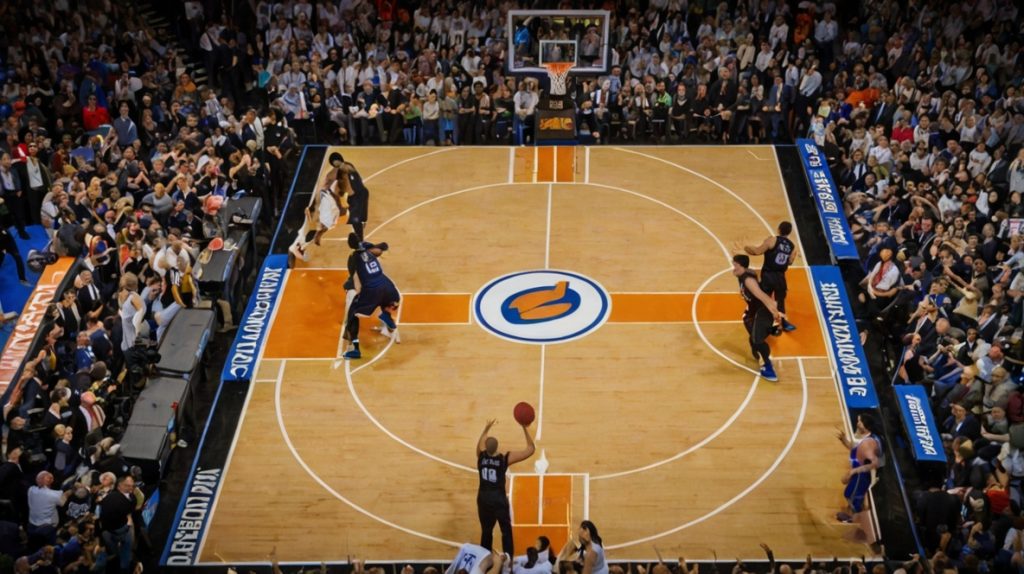
Men’s March Madness: The Adrenaline of the Premier Showcase in College Basketball
Known by most as March Madness, the NCAA Division I Men’s Basketball Tournament enthralls sports fans across the country and beyond every spring. Renowned for its chaos, drama, and unforgettable moments, this single-elimination tournament featuring 68 collegiate teams is one of the most highly anticipated events in American sports.
History of March Madness
March Madness traces its origins back to 1939 when Oregon emerged as the first tournament champion. Initially featuring just eight teams, the event expanded over the decades, eventually growing to include 68 teams in 2011. The phrase “March Madness” became widely recognized in the 1980s thanks to commentator Brent Musburger, and it has since become synonymous with the tournament’s unpredictable nature.
Tournament Structure
The modern tournament kicks off on Selection Sunday, when a committee announces the bracket, ranking teams from 1 to 16 across four regions. The field consists of 32 automatic qualifiers (conference champions) and 36 at-large bids. The action begins with the First Four in Dayton, Ohio, where eight teams battle for the final spots in the 64-team main draw.
How the Tournament Unfolds:
- First & Second Rounds: The 64 teams are quickly cut down to 16.
- Sweet 16 & Elite Eight: Regional finals determine the Final Four.
- Final Four: Hosted in massive football stadiums, these national semifinals attract over 70,000 fans.
- Championship Game: The final showdown determines college basketball supremacy.
More Than Just Basketball: A Cultural Phenomenon
March Madness is more than a tournament—it’s a cultural touchstone. Millions of people fill out brackets in hopes of predicting winners, an impossible task given the tournament’s frequent upsets. The phrase “anything can happen” was solidified in 2018 when UMBC became the first 16-seed to defeat a 1-seed, stunning Virginia.
With broadcasting rights generating over $1 billion annually, the NCAA profits immensely, while host cities experience economic booms from tourism. The tournament has also propelled countless players to stardom—think of Jim Valvano’s legendary NC State run in 1983 or Steph Curry’s breakout performance with Davidson in 2008.
Unforgettable Moments & Cinderella Stories
The tournament has a rich history of legendary moments:
- 1983: NC State’s Lorenzo Charles dunks at the buzzer to defeat Houston.
- 1992: Duke’s Christian Laettner hits the iconic turnaround jumper to reach the Final Four.
- 2016: Villanova’s Kris Jenkins sinks a championship-winning buzzer-beater three.
- 2022: 15-seed Saint Peter’s stuns the nation by reaching the Elite Eight.
Debates & Evolving Trends
Despite its popularity, March Madness isn’t without controversy. Critics highlight issues like player compensation disparities, especially as the NCAA’s revenue skyrockets. The “one-and-done” rule, which requires top NBA prospects to play one season in college before turning pro, also sparks debate. However, recent changes—including Name, Image, and Likeness (NIL) rights—are reshaping the landscape of college basketball.
The Road Ahead
In 2023, UConn claimed its sixth championship with a dominant performance against San Diego State. As the 2024 tournament approaches, fans eagerly anticipate fresh heroes, shocking upsets, and the timeless magic that defines March Madness.
Final Thoughts
March Madness isn’t just a basketball tournament—it’s a national obsession. Its mix of raw passion, Cinderella stories, and unpredictable outcomes cements its place in American sports culture. Whether you’re a die-hard fan or a casual viewer, March delivers the madness, and we’re all here for it.